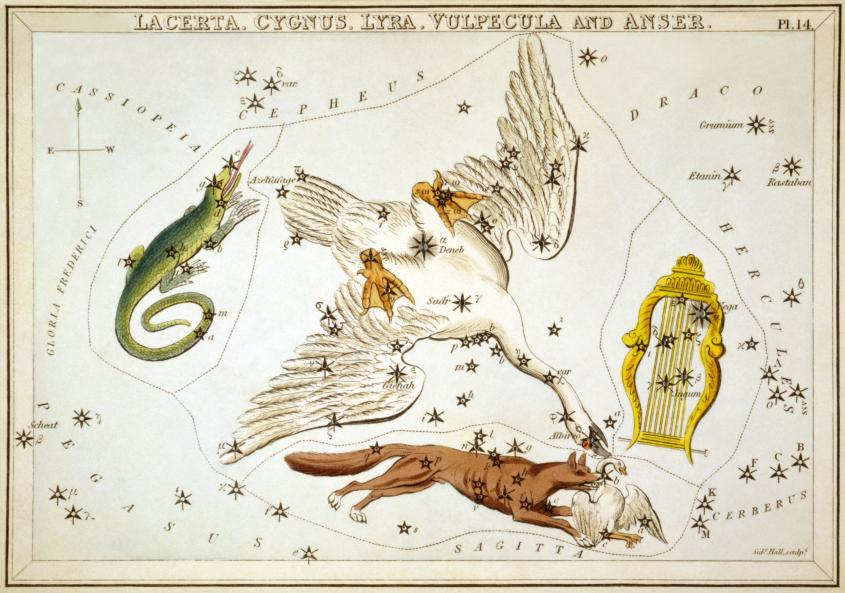Lyra (Lyre)
The Lyre is a very old constellation. It remembers the instrument Lyre that was invented by Hermes. While Lyra is a rather small constellation, it is very distinct and easy to recognize. Moreover, it contains the fifth brightest star in the night sky: Vega (α Lyrae). Together with the stars Deneb and Atair, Vega forms the well-known summer triangle.
There are two meteor shower emerging from Lyra. The April Lyrids reach their maximum around the 21st/22nd of April, with about 12 meteors per hour. The June Lyrids reach their maximum around the 16th of June, with about eight meteors per hour.
One of the most famous ring nebulas, Ring Nebula (M57, NGC6720), can be found in Lyra. M57 (NGC 6720) is a planetary nebula with a distance of about 4100 light years. It is located in between β Lyr and γ Lyr. Its apparent diameter is larger than that of the planet Jupiter. In telescopes, it appears as a fine ring of smoke. The green and bluish colors of the nebula become apparent on photographs.
There are two meteor shower emerging from Lyra. The April Lyrids reach their maximum around the 21st/22nd of April, with about 12 meteors per hour. The June Lyrids reach their maximum around the 16th of June, with about eight meteors per hour.
One of the most famous ring nebulas, Ring Nebula (M57, NGC6720), can be found in Lyra. M57 (NGC 6720) is a planetary nebula with a distance of about 4100 light years. It is located in between β Lyr and γ Lyr. Its apparent diameter is larger than that of the planet Jupiter. In telescopes, it appears as a fine ring of smoke. The green and bluish colors of the nebula become apparent on photographs.
This constellation does not belong to the zodiac.
It's brightest star is Vega (α Lyrae).
Neighboring constellations are Hercules, Vulpecula, Cygnus, and Draco.
Have a look at our full list of all constellations.
